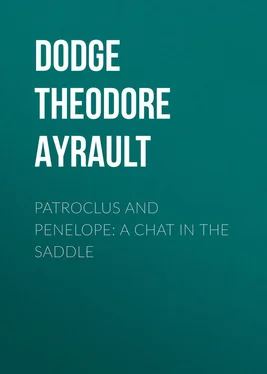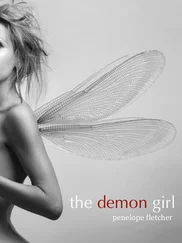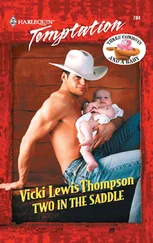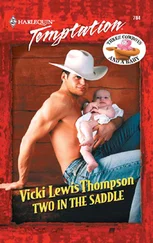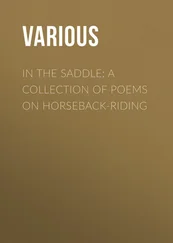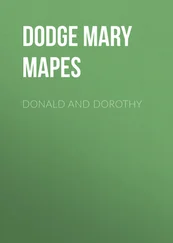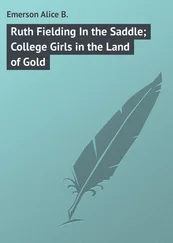Theodore Dodge - Patroclus and Penelope - A Chat in the Saddle
Здесь есть возможность читать онлайн «Theodore Dodge - Patroclus and Penelope - A Chat in the Saddle» — ознакомительный отрывок электронной книги совершенно бесплатно, а после прочтения отрывка купить полную версию. В некоторых случаях можно слушать аудио, скачать через торрент в формате fb2 и присутствует краткое содержание. Жанр: foreign_antique, foreign_prose, на английском языке. Описание произведения, (предисловие) а так же отзывы посетителей доступны на портале библиотеки ЛибКат.
- Название:Patroclus and Penelope: A Chat in the Saddle
- Автор:
- Жанр:
- Год:неизвестен
- ISBN:нет данных
- Рейтинг книги:3 / 5. Голосов: 1
-
Избранное:Добавить в избранное
- Отзывы:
-
Ваша оценка:
- 60
- 1
- 2
- 3
- 4
- 5
Patroclus and Penelope: A Chat in the Saddle: краткое содержание, описание и аннотация
Предлагаем к чтению аннотацию, описание, краткое содержание или предисловие (зависит от того, что написал сам автор книги «Patroclus and Penelope: A Chat in the Saddle»). Если вы не нашли необходимую информацию о книге — напишите в комментариях, мы постараемся отыскать её.
Patroclus and Penelope: A Chat in the Saddle — читать онлайн ознакомительный отрывок
Ниже представлен текст книги, разбитый по страницам. Система сохранения места последней прочитанной страницы, позволяет с удобством читать онлайн бесплатно книгу «Patroclus and Penelope: A Chat in the Saddle», без необходимости каждый раз заново искать на чём Вы остановились. Поставьте закладку, и сможете в любой момент перейти на страницу, на которой закончили чтение.
Интервал:
Закладка:
Theodore Ayrault Dodge
Patroclus and Penelope: A Chat in the Saddle
BEFORE MOUNTING
But a few months since, the author, whose thirty odd years in the saddle in many parts of the world have, he trusts, taught him that modesty which should always be bred of usage, was showing some of the instantaneous photographs of his horse Patroclus to a group of Club men. Most of the gentlemen were old friends, but one of the photographs having been passed to a by-stander, whose attire marked him as belonging to the most recently developed Boston type of horsemen, elicited, much to his listeners' entertainment, the remark that "naw man can wide in a saddle like that, ye know, not weally wide, ye know! naw fawm , ye know! wouldn't be tolewated in our school, ye know!" The author was informed by a mutual acquaintance that the gentleman was taking a course of lessons at the swellest riding academy of the city, and had recently imported an English gelding. In deference to such excellent authority, whose not unkindly meant, if somewhat brusquely uttered, criticism may be said to have inspired these pages, otherwise perhaps without a suitable motif , an explanation appears to be called for, lest by some other youthful equestrian critics the physician be advised to heal himself.
The exclusive use of the English hunting-rig and crop for all kinds and conditions of men at all times and in all places is well understood by old horsemen to be but a matter of fashion which time may displace in favor of some other novelty. For their proper purpose they are undeniably the best. But to the newly fledged equestrian who makes them his shibboleth, and who discards as "bad form" any variation upon the road from what is eminently in place after hounds, the author, with an admiration for the excellencies of the English seat derived from half a dozen years' residence in the Old Country and many a sharp run in the flying-counties, and with the consciousness that, if tried in the balance of to-day's Anglomania, his own seat, as shown in some of the illustrations, may chance to be found wanting, desires to explain that, during the Civil War, outrageous fortune, among other slings and arrows, sent him to the rear with the loss of a leg; but that far from giving up a habit thus become all the more essential because he could no longer safely sit a flat saddle, he concluded to supplement his lack of grip (as the Marquis of Anglesea for a similar reason had done before him) by the artificial support which is afforded in the rolls and pads of a somerset or demi-pique, as well as to adopt the seat best suited to his disability. And it was such a saddle, of a pattern perhaps too pronounced to suit even the author's eye, however comfortable and safe, – particularly so in leaping, which provoked the censure, perhaps quite justifiable according to the light of the critic, which has been quoted above. This variation, however, by no means conflicts with the author's belief in, and constant advocacy of, the flat English saddle in its place . But he has seen so many accomplished riders in quite different saddles, that he became long ago convinced that the English tree by no means affords the only perfect seat. In fact, the saddle best suited to universal use, that is, the one which might best serve a man under any conditions, approaches, in his opinion, more nearly the modified military saddle of to-day than the hunting type.
Nor because a local fashion, set but yesterday, prescribes strict adherence to a style he cannot follow, is the author less ready to venture upon giving a friendly word of advice to many of our young and aspiring riders. There are not a few gentlemen in Boston, whose months in the saddle number far less than the author's years, to whose courage and discretion as horsemen he yields his very honest admiration, and whose stanch hunters he is happy to follow across country, nor ashamed if he finds he has lost them from sight. He regrets to say that he has also seen not a few who affect to sneer at a padded saddle or a horse with a long tail, who seem incapable of throwing their heart across a thirty inch stone wall in a burst after hounds, although upon the road they seek to impress one as constantly riding to cover.
It is unnecessary, however, to say that the author has too long been a lover of equestrianism per se not to admire the good and be tolerant of the bad for the total sum of gain which the horseback mania of to-day affords. He is old enough to remember that human nature remains the same, however fast the world may move, and is firm in the belief that we shall soon grow to be a nation of excellent horsemen.
There is no pretense to make these pages a new manual for horse-training or for riding. There are plenty of good books on horsemanship now in print; but unfortunately there are few riders who care for anything beyond a superficial education of either their horses or themselves. More than rudimentary – if viewed in the light of the High School – the hints in this volume can scarcely be considered. If any incentive to the study of the real art and to the better training of saddle beasts is given, all that these pages deserve will have been gained.
The plates are phototype reproductions from photographs of Patroclus, taken in action by Baldwin Coolidge. Their origin lay in the belief that a fine-gaited horse could be instantaneously photographed, and still show the agreeable action which all horse-lovers admire, and have been habituated to see drawn by artists, instead of the ungainly positions usually resulting from the instantaneous process. The object aimed at – to show an anatomically correct and artistically acceptable horse in each case – has, it is thought, been gained, so far, at least, as motion arrested can ever give the idea of motion.
Out of thirty photographs taken, the fourteen herein given, and one or two others, much resembling some of these, showed an agreeable action. The best positions of the horse were often the poorest photographs. In enlarging them by solar prints for the phototype process, the shadows of the horse have been darkened, or in some instances, where a negative has been blurred or injured, an indistinct line has been strengthened. In some plates the photograph was so clear (as Plates IV. and V.) that no darkening of the shadows was necessary. In others (as Plates VII. and VIII.) the negative, though showing excellent position, was so weak as to require a good deal of treatment. But in even the most indistinct ones the outline and crude shadows were clearly shown by the negatives, and followed absolutely in treating the solar prints. The plates are thus obtained intact from the original instantaneous negatives, and faithfully represent the action and spirit of the horse. The jumping pictures were taken against the natural background, the others against a screen or building. In the latter, the entire background has been made white, for greater distinctness. The water-jump was in reality a dry ditch of eleven feet wide from bar to bank. But being hidden in the original negatives by the heaps of earth thrown up in digging it, and several of the negatives being blurred in the foreground, the water was added in the solar prints. To preserve anatomical accuracy, the finer results of both photography and of the phototype process have had to be sacrificed.
To state that the author has often witnessed the prize leaping at the Agricultural Hall Horse Show in London, as well as watched the contest of many a noted English steeple-chase, will absolve him from any suspicion of parading these photographs as examples of excellent performance. They were all taken in cold blood on one occasion, and Patroclus was ridden alone over the obstacles at least a dozen times for each good picture secured. Every horseman knows that this is a pretty sound test of a willing jumper, if not a crack one. Moreover, the author has been acquainted with too many masters of equitation, at home as well as abroad, to harbor any but a very modest opinion of his own equestrian ability. He would be much more sensitive to criticism of Patroclus than of himself, for he knows the horse to be an exceptionally good one within his limitations, while always conscious that his own seat lacks the firmness of ante-bellum days. It used to be said in the Old Country that an Englishman keeps his seat to manage his horse, and that a Frenchman manages his horse to keep his seat. The author is obliged to confess that to-day he is often reduced to the latter practice.
Читать дальшеИнтервал:
Закладка:
Похожие книги на «Patroclus and Penelope: A Chat in the Saddle»
Представляем Вашему вниманию похожие книги на «Patroclus and Penelope: A Chat in the Saddle» списком для выбора. Мы отобрали схожую по названию и смыслу литературу в надежде предоставить читателям больше вариантов отыскать новые, интересные, ещё непрочитанные произведения.
Обсуждение, отзывы о книге «Patroclus and Penelope: A Chat in the Saddle» и просто собственные мнения читателей. Оставьте ваши комментарии, напишите, что Вы думаете о произведении, его смысле или главных героях. Укажите что конкретно понравилось, а что нет, и почему Вы так считаете.
